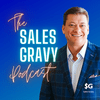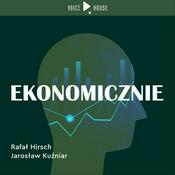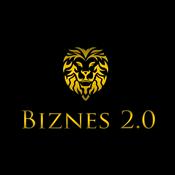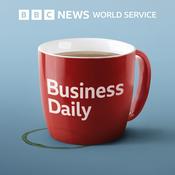414 odcinków

How to Negotiate Sales Compensation Without Burning Bridges (Ask Jeb)
30.12.2025 | 14 min.
Here's a question that keeps salespeople up at night: How do you ask for more compensation when you're getting competitive external job offers without sounding like you're issuing an ultimatum? That's the question posed by Brady from Arkansas. Brady's been getting legitimate job offers from recruiters, and he's wondering how to leverage these opportunities into better compensation at his current company without burning bridges or coming across as disloyal. If you've ever found yourself in this position, you know it's a delicate dance. You want to be paid what you're worth, but you also don't want to destroy the relationships and goodwill you've built. So how do you navigate this conversation? The Right Way to Have the Conversation If you're getting external job offers from legitimate companies with strong brands, the key is in how you frame the conversation with your boss. Here's the approach: "I really like working here, and I want to stay at this company. I love it. But I've got another company out there that's a good company. They're a great brand, they're well known, and they're making this job offer to me at a significantly higher level of compensation. It's hard for me to say no to that. I feel like I need to bring this to you before I make a decision because I like working here." Notice what you're NOT saying. You're not walking in with an ultimatum saying, "If you don't give me this, I'm leaving." Instead, you're saying, "I want to stay here. I like it here. I'm just in a situation where they're offering me enough that it's turning my head and I'm looking their way." This approach keeps the door open for a productive conversation about what might be possible without threatening your current employer or damaging your relationship. When Loyalty Actually Matters Now, before you go schedule that meeting with your boss, you need to ask yourself a hard question: Do you owe this company some loyalty? If you were down on your luck, lost a job, and they came along and gave you something that saved you, you probably owe them some loyalty for that. Not forever, but there's a little bit of honor in not just jumping to the next place immediately. You also need to think about your resume. If you've just got there and a year later you're jumping to another place, that's on your resume. And believe it or not, even in today's world, that still means something. I won't hire people who jump from job to job every year. I don't care how good they are because they're probably going to jump again. So think long term: Am I demonstrating to a future employer that I'm worth investing more money in? The answer is yes when you gave them three years of your life, performed at a really high level, and now you're going to leverage that to go level up elsewhere. Speaking Your Boss's Language Here's what most salespeople get wrong when asking for more money: They forget to speak the language their boss understands. If you walk into your sales leader's office and say, "I want to make more money," you know what they're going to tell you? "Go sell more." And they're right. If you've got a great compensation plan with no limit on how much commission you can make, the answer is simple: crank out more sales. So before you ask for more base salary, ask yourself: Do I have a limit on how much commission I can make? If the answer is no, then your first conversation should be about getting bigger opportunities. Try this approach: "I can sell. I'm hitting numbers, but I'm not making the money I want. What can you do to give me bigger accounts, bigger opportunities, bigger customers? Give me better leads. What can you do to get me in a situation where I can earn more?" This is speaking the boss's language. You're showing that you want to produce more, not just get paid more for the same work. If you get shut down in that situation, then you have another conversation. The Commission vs. Base Salary Play If you're a baller and you've proven you can sell, here's a move most salespeople never consider when negotiating compensation: Ask for a higher commission percentage instead of a higher base salary. I honestly don't care about base. I think a base matters when you're getting started, and it's nice to have, but I would much rather have a higher commission percentage than a higher base. Here's how you position it: "In the open market, I can take a similar job and make $400,000. I want to make the same thing here. Now there's two ways we could do this. One is that you can increase my base salary. Two is you give me a higher commission rate, and I think the commission rate should be this. I think I'm worth that." What you're basically saying is that your cost of sales is going to be variable. They only pay you if you sell it, so their carrying costs stay the same. In my company, the people who don't take a base salary make more than double in commission what people who do take a base salary bring home. There's a massive difference because the people saying "pay me more commission" are saying "I'm willing to put skin in the game in order to make more." Now, this doesn't work if you're at a massive company with a thousand salespeople and rigid HR policies. But if you work for a smaller organization where people can make decisions, have an honest conversation around this approach. You might even propose a tiered structure: "You can pay me your base commission on everything up to the quota you gave me. But once I cross that quota, I want my commission to roll up so that if I get over this number, the rate scales." That's a conversation most entrepreneurial leaders will entertain because it's putting your money where your mouth is. What Money Can't Buy Here's the thing most people miss when they're chasing the next big paycheck: There's always money out there you can chase. You have an obligation to yourself and your family to make as much as you possibly can in sales. But there's also the value of working in a place that values you. There's more than just the money. There's the freedom, the flexibility, and the opportunity to be part of something that gives you purpose. I had somebody come to me recently and ask this question, and I said, "This job that you're moving to that's going to pay you all this money, suddenly you're going to have someone who's micromanaging and telling you what to do every single day. In your current role, you're not making as much money, but you call the shots on your day every single day. Nobody even messes with you. Are you willing to sign up for that?" They said their wife told them the exact same thing. Maybe that's a sign that having the freedom and flexibility is more valuable than making a lot of money but being miserable because everything you do is being micromanaged. The Bottom Line When it's time to ask for more money, remember these principles: Bring the conversation to your boss before making a decision. Frame it as wanting to stay, not threatening to leave. Consider what you owe in loyalty. If they gave you a chance when you needed one, factor that into your decision. Speak your boss's language. Ask for bigger opportunities before asking for more base pay. Consider the commission play. If you're confident in your abilities, asking for higher commission rates can be more lucrative than base salary increases when looking at total compensation. Weigh the intangibles. Money isn't everything if you're trading freedom and fulfillment for a micromanaged existence. The best compensation conversations happen when you approach them with confidence, gratitude, and a clear understanding of your value. That's how you get paid what you're worth without burning bridges along the way. Want to learn more about leveraging your personal brand to create more career opportunities? Check out Jeb's newest book, The LinkedIn Edge, and discover how to turn your LinkedIn profile into a powerful career and sales tool.

The $1 Billion Sales Psychology Mistake: Why Selling Logic Kills Deals (Money Monday)
29.12.2025 | 9 min.
Is your sales strategy built around how buyers should behave—or how they actually behave? Imagine walking into a store and seeing a shirt for $50. Fine. Unremarkable. You might buy it, you might not. Now imagine seeing that same shirt with a tag that reads: $100 NOW $50. Suddenly, you're interested. You found a deal. You beat the system. You're a hero. Same price. Same shirt. Completely different emotional response. That psychological gap between logic and emotion cost JCPenney roughly $1 billion and offers one of the most important lessons in sales psychology you'll ever learn: people don't buy with logic—they buy with emotion and justify with logic later. The Fair and Square Disaster In 2012, JCPenney hired Ron Johnson as CEO. Johnson was a retail rock star, the architect behind Apple Store's legendary success. He walked into JCPenney and saw chaos: endless coupons, manufactured "original prices," and constant sales cycles. His solution? Kill it all. Johnson launched "Fair and Square"—a radically transparent pricing model. No games. No coupons. No inflated prices marked down. Just one everyday low price on everything. That $100 shirt marked down to $50? Now it was simply $50. Honest. Logical. Clean. The market's response was brutal. Within one year, sales dropped 25%. The company lost nearly $1 billion. Stock price went into freefall. Johnson was fired. What Johnson Got Wrong About Sales Psychology Johnson made a catastrophic assumption: he believed customers were rational economic actors who would reward transparency and honesty. He was dead wrong. For decades, JCPenney's customers had been playing a game. They clipped coupons, timed sales, scrutinized flyers, and planned shopping trips around promotions. The weekly coupon wasn't just a discount—it was a ritual. Their insider advantage, their badge of savvy shopping honor. Johnson stripped away their emotional satisfaction and replaced it with sterile efficiency. Without the "$100 now $50" comparison, the flat $50 price lost all psychological weight. No thrill. No victory. No story to share. Same price. Different feeling. The Sales Psychology Principle You're Ignoring Loss aversion is twice as powerful as gain motivation. Your prospects don't just want to gain something—they want to feel like they won, like they're in control, like they made a smart decision that will impress their boss. When you strip away their buying process, when you force them into your "more efficient" workflow without their input, they don't see the gain. They experience loss. You've taken away their control, their ritual, their power, their role as the hero. In sales, that feeling is deadly. Your Customers Have Rituals Too Think about your best accounts. What do they actually value? It's probably not your features or your ROI calculator. It's the rep they've worked with for years. It's the quarterly business review they rely on. It's the reporting cadence that makes them look good internally. It's the buying process that lets them feel competent and in control. That's their ritual. When you try to "streamline" their process, when you push them toward a different point of contact, when you change the reporting structure they trust—you're doing exactly what Ron Johnson did. You're selling logic when they're buying a feeling. Stop Leading With Features and Benefits Most salespeople lose deals before they even start because they lead with logical arguments: "Our platform reduces processing time by 40%." "We integrate with 200+ systems." "Our customer support response time is under 2 hours." All logical. All true. All useless if your buyer doesn't feel something first. Your prospect doesn't wake up excited about efficiency gains. They wake up stressed about looking good in front of their VP, avoiding mistakes, and maintaining control of their budget. Research is clear: emotional decisions get made first, then logic comes in to justify them. Your job isn't to build a logical case. Your job is to help your buyer feel like a hero, then give them the logical ammunition to defend that emotional decision internally. How to Apply This Starting Today Identify Their Rituals Watch how your customers actually operate. Do they need three stakeholders in every meeting? Do they always loop in procurement at a specific stage? Do they have a preferred communication cadence? Don't fight it. Work with it. Their process is their psychological anchor for stability. Frame the Win They Can Own Frame your solution so the customer feels in control and gets the credit. Instead of: "Our platform will solve your problem." Try: “This approach could help you demonstrate a 30% cost reduction in Q2—giving your team clear wins to share with leadership.” Make them the hero of their own story. Highlight Emotional Outcomes, Not Just Logical Ones Don't just talk about what your product does. Talk about how it makes them feel. "You'll have complete visibility so you're never caught off guard in executive meetings." "Your team will finally have the data they need to look proactive instead of reactive." "You'll be the person who solved the problem everyone else said was impossible." Guide, Don't Force Lead your prospects toward better outcomes without stripping away their sense of control. Instead of forcing a complete switch to your system, collaborate on how your solution enhances their existing trusted process. Make them feel like a collaborator, not a passenger. The Takeaway Ron Johnson wasn't wrong that consumers should prefer transparent, honest pricing. He wasn't wrong that the coupon game was exhausting and complicated. He was wrong about what people actually buy. They buy feelings. Control. Victory. Status. The story they tell themselves about being smart. Your prospects are no different. They're not buying your SaaS platform, your consulting services, or your enterprise solution. They're buying the feeling of being competent, in control, and successful. The difference between average salespeople and top performers isn't product knowledge or work ethic. It's understanding the sales psychology behind how buyers actually make decisions. When you appeal to emotion first and back it up with logic second, you stop losing deals to “no decision” and start winning consistently. Because at the end of the day, sales isn't about having the best product. It's about making your customer feel like they made the best decision. Ready to master buyer psychology and close more deals? Download the ACED Buyer Style Playbook and discover how to match your sales approach to the four core buyer personalities. Stop selling logic. Start selling the way your customers actually buy.

4 Ways Top Performers Stay Motivated and Close More Deals (Even When Sales Gets Hard)
26.12.2025 | 37 min.
How Do Top Performers Stay Motivated When Sales Gets Hard? You know the feeling when you close a big deal. The rush. The quiet satisfaction of updating your pipeline. Maybe a quick high-five with your manager. And then, almost immediately, it fades. You’re back to cold calls that go unanswered, emails that disappear into inboxes, and prospects who promised they were interested suddenly going silent. In sales, rejection isn’t a side effect of the job. It is the job. That reality is exactly why most people don’t last in sales. And it’s why the people who do last tend to get paid very well. Over the past quarter, we talked with some of the most consistent sales leaders in the business. Here are four moments from the Sales Gravy Podcast that reveal how top performers stay motivated and close more deals, even when the work feels heavy. Find Your Carrot and Make It Specific Will Frattini, VP of Sales at ZoomInfo, keeps a small Christmas ornament on his desk. His daughter gave it to him when she was five. That ornament is his carrot. During a recent podcast conversation, Will explained that when sales gets hard, that ornament reminds him exactly why he keeps pushing. Not in an abstract or inspirational-poster way, but in a deeply personal one. It represents his family, his responsibility, and the future he’s building for them. That distinction matters. Many salespeople say they’re motivated by family, freedom, or financial security. Those values are real, but on their own, they’re often too broad to sustain sales motivation during a brutal stretch of rejection. When you’re fifty dials deep with no connects and another demo just canceled, vague motivation doesn’t hold up. Will doesn’t just think “my family.” He sees a moment, a memory, and a tangible reminder of what’s at stake. That specificity gives his motivation weight. Top performers anchor their sales motivation to something concrete and emotionally charged. A down payment they want to make by a certain date. A trip they want to take without checking their bank account. A milestone that matters beyond quota. The more specific the carrot, the more powerful it becomes when sales gets hard. How to define yours: Write down one specific outcome you want to achieve in the next six months. Not “hit quota,” but the real-world result that quota enables. A number. A purchase. An experience. Put it somewhere you’ll see it every day. Work With Customers Who Actually Value You One of the fastest ways to drain sales motivation is closing deals with customers who make you miserable. On an episode of Ask Jeb, Jeb broke down how companies grow faster by focusing on the right customers, not just more customers. When you’re behind on quota late in the year, it’s tempting to take anything that looks like revenue. Any company that shows interest. Any prospect willing to meet. You convince yourself that a deal is a deal. Then January arrives. That customer floods your team with support tickets, questions every invoice, demands exceptions, and slowly erodes the satisfaction of the win you celebrated just weeks earlier. Consistent performers learn to protect their energy. They get ruthless about fit. Not just company size or industry, but values. They ask questions like, “What do you value most in a partner?” and they listen carefully to the answer. Some buyers want constant responsiveness. Others value expert perspective and challenge. Some want efficiency and minimal interaction. None of those preferences are wrong. But only one aligns with how you actually sell. When sales gets hard, motivation comes easier when you’re pursuing customers who respect your approach instead of fighting it. How to clarify your ideal customer: Look at your three favorite customers. The ones your entire team enjoys working with. What do they share beyond surface-level traits? How did they behave during the buying process? Those patterns matter more than any firmographic filter. Slow Down Before You Create Your Own Problems When pressure builds, speed starts to feel productive. You rush contracts. You promise timelines without checking internally. You say yes to custom requirements because slowing down feels risky. On an episode of the Sales Gravy Podcast, Jeb Blount, Jr. shared one of the most painful stories we heard this year. A $1.4 million deal with a pediatrics practice unraveled after someone rushed the process and placed the client into an early adopter program without a test environment. The result was catastrophic. The client’s live system crashed, HIPAA was violated, and the company lost not only the deal but $600,000 in annual recurring revenue. Top performers understand something most reps learn the hard way: smooth is fast. They build guardrails around high-risk moments. Before sending a contract, they align internally. Before committing to timelines, they check with the people who actually do the work. Slowing down at the right moments builds trust. It prevents chaos. And it preserves sales motivation by keeping you from spending the next quarter cleaning up mistakes made under pressure. How to build a slowdown system: Identify the three points in your sales process where you tend to rush. Proposals, negotiations, technical commitments. Create a short checklist for each and make it mandatory. Use AI to Think Faster, Not to Stop Thinking Sales demands constant context switching. Pipeline reviews. Prospect research. Discovery prep. Follow-up. Objection handling. The mental load adds up quickly. Victor Antonio recently shared an example of a window company using vision AI to diagnose broken window seals from photos. Instead of sending a technician, customers submit an image. The system verifies the issue, checks inventory, confirms warranty status, and schedules service automatically. AI hasn’t changed what strong salespeople do. It’s changed how quickly they get to the work that actually matters. Top performers use AI to handle tasks that drain energy but don’t require judgment. Research summaries. Organizing notes. Drafting frameworks. That speed preserves mental bandwidth for conversations, strategy, and relationship building. Used correctly, AI supports sales motivation by reducing friction, not replacing effort. How to use AI without dulling your edge: List the tasks you repeat weekly that consume time but not insight. Let AI handle those. Keep anything involving trust, nuance, or decision-making firmly in your hands. Why This Matters for Sales Motivation Sales has always been hard. Cold calling was hard decades ago, and it’s still hard today. You still have to find people, start conversations, build trust, and ask for commitments. What separates average reps from consistent performers isn’t resilience alone. It’s structure. Top performers know exactly what they’re chasing and why it matters. They protect themselves from bad-fit customers. They slow down when it counts. And they use tools strategically to preserve energy for selling. They still get rejected. They still lose deals. They still have months where nothing goes right. But they don’t drift. They don’t panic. And they don’t quit when the work gets uncomfortable. That discipline is what sustains sales motivation long after the initial excitement wears off. If you want a clearer target to aim at when sales gets hard, download the FREE Sales Gravy Goal Guide. It will help you define the goals that actually keep you focused, disciplined, and motivated—especially when rejection starts piling up.

How to Hit Your Number When Production Can’t Keep Up (Ask Jeb)
23.12.2025 | 17 min.
Here's a problem that'll make your head spin: What do you do when you can sell way more than your company can produce? That's the question posed by Dylan Noah from Toronto. Dylan sells craft cider to bars and restaurants across his territory. He's the only salesperson for a small producer, working with limited tools (no proper CRM), and here's the kicker: he could sell a million dollars' worth of product, but production isn't enough to meet that demand. If you're shaking your head thinking this is a champagne problem, you're half right. But for Dylan trying to hit his income goals through commissions, it's a real constraint that's costing him money every single day. The CRM Obsession Is a Distraction Let's tackle the first issue head on. Dylan is worried he doesn't have the right CRM tools to manage his accounts and hit his numbers. Here's the brutal truth: at one point in time, salespeople sold a lot of cider, beer, wine, liquor, and all kinds of other stuff without any CRM at all. They used index cards in a box. They had lists on paper. And they crushed it. You're a small business with one salesperson working with 3,000 to 7,000 potential accounts in your territory. The last thing you should worry about right now is a $40,000 CRM system. Could you use automation for email sequences and promotions? Absolutely. Should you eventually invest in something like HubSpot or Pipedrive? Yes. But right now, what you need is a simple system to identify your best accounts and focus your time there. You're not going to hit $1 million across 3,000 accounts. You're going to hit it across 500 accounts that are the biggest restaurants and bars, where they like you, their customers like cider, and where you can create events and experiences that spike sales. Use a spreadsheet. Use index cards. Use whatever basic tool you've got right now. Create a 30-60-90 day system where you know who you're calling on in the next 30 days, the next 60 days, and the next 90 days. Build a list of your top 250 accounts that buy the most from you. That's where you live. Stop obsessing over tools you don't have and start maximizing the opportunity in front of you. Scarcity Is Your Secret Weapon This brings us to the real issue: production capacity. Dylan can sell it, but his company can't make enough of it. The bourbon distillers in America are dealing with this exact problem right now. They ramped up production years ago based on projected demand, and now they're sitting on excess inventory that's aging out. It's a delicate balance, and if you make too much, it goes bad and you lose everything. Here's what most salespeople don't understand about scarcity: it's actually a competitive advantage if you manage it right. When you have limited product, you're always going to be in an ebb and flow situation. Sometimes you'll have an abundance of one product type. Sometimes you'll have high demand products in short supply. The key is building a system that lets you move fast when opportunity strikes. This is where building buying profiles for every single customer becomes essential. You need to know which accounts buy which types of products, what their purchase patterns look like, and what their potential is (high, medium, or low). Think about it like your account coverage pyramid. When you have product available, you start at the top with your highest value accounts and work your way down. You're not treating all 150 accounts the same. You're prioritizing based on potential. When you have an abundance of one product type, you go directly to the customers who buy that product and say, "Hey, I've got product right now. Do you want to buy?" You can run specials. You can offer incentives (within legal limits). You move it fast. When your high demand products come in, you call your best accounts first and say, "I've got ten cases of this. I'm calling you first. How many do you want?" Then you go down your list. Most of the time, you'll sell out before you even leave your office. But if you've got 150 accounts and you're treating them all the same, it gets overwhelming fast. Segment them. Prioritize them. Work them strategically. Making Your Number When You Can't Control Supply The income issue is where this gets really interesting. Dylan wants to double his sales and earn more commissions, but he can't because the company keeps running out of product. Here's my take: if you're supposed to sell $1.5 million but your company only produces $750,000 worth of product that you could sell, they should pay you for the $1.5 million. Production was the reason you couldn't make your number, not your sales ability. Now, I know there are people in operations reading this who are going to say I'm full of it. But from a sales standpoint, if you've sold out of everything available, you've done your job. The constraint isn't you, it's production capacity. That's a hard conversation to have with ownership, I get it. But here's how you make that case: sell out of the other stuff that people don't want as much. Figure out how to move all of it. Put yourself in a position where you own the moral high ground when it comes to sales performance. If you do that and they still can't or won't pay you for what you could have sold, then you've got a decision to make. But at least you'll have learned how to sell in a resource-constrained environment, how to build relationships, how to manage your territory, and how to work a manual system. Those are skills that transfer to any sales role, especially ones that give you all the bells and whistles and unlimited product to sell. The Power of Old School Discipline Let's go back to 1985 for a minute. In 1985, you would have had a Rolodex with tabs for H (high potential), M (medium potential), and L (low potential) accounts. When product came in, you'd open to H, pull out the cards, and start dialing. "I've got ten cases of your favorite cider. I'm calling you first. How many do you want?" If they don't want any, click. Next card. By the time you hit the tenth account, you're usually sold out. That's the power of segmentation combined with discipline. Systems beat moods. Sequence beats sporadic effort. Process creates momentum. You don't need fancy technology to do this. You need clear priorities, good segmentation, and the discipline to work your system consistently. The Bottom Line If you're in Dylan's situation with limited tools and limited product, here's your game plan: Stop worrying about what you don't have and focus on maximizing what you do have. Build a simple segmentation system using whatever tools are available. Create detailed buying profiles for all your accounts so you know exactly who to call when specific products become available. Work your account coverage pyramid from top to bottom, always prioritizing your highest value customers. Sell out of everything, even the less popular products, so you have leverage when talking to ownership about compensation. The reality is that most sales challenges aren't about having the perfect tools or unlimited resources. They're about having the discipline to work a proven system consistently, even when conditions aren't ideal. That's how you win in sales. That's how you hit your numbers. And that's how you build a foundation of skills that will serve you for your entire career, whether you stay in a resource constrained environment or move to a role where the sky's the limit. Ready to master the fundamentals of prospecting and account management? Check out Jeb Blount's latest book with Brynne Tillman, The LinkedIn Edge, and learn how to build systematic, relationship-driven sales processes that work in any environment.

How to Move from Regret to Reflection: A Year-End Sales Debrief (Money Monday)
22.12.2025 | 11 min.
While regret anchors you to past failures, reflection acts as a catalyst for future sales growth. This article and Sales Gravy Money Monday Podcast episode explores how to break the "if-only" loop and provides a step-by-step year-end debrief to help you extract lessons from your wins and losses, ensuring you start the new year with clarity and a proven system for success. Explore: How to get out of your regret loop The power of reflection How reflection creates awareness A system for achieving your sales goals 7 Steps to year-end sales reflection Ways to Look Back at Your Sales Year For me, the last two weeks of the year have always been the chance to pause, take a break from the grind of selling, and really think about what happened over the past year—the good, the bad, and the ugly. If you are anything like me and do the same, there are two ways to look back on your last twelve months. You can do so with regret or reflection. These two opposing lenses are vastly different in the way they affect your view of where you’ve been and where you are going. The Trouble With Regret Let’s start by unpacking regret. Some of you are already feeling regret about goals you missed, deals you lost, opportunities that slipped through your fingers, or the people in your life you may have let down. Regret is that feeling you get when you look back on something you did (or didn’t do) and wish you could change it. In many ways, regret is similar to worry, except it’s focused on the past instead of the future. Worry is about what might happen; regret is about what already happened. That’s a big distinction. Although you can turn worry into action and change the future, you cannot rewrite the past. No amount of regret changes history. All it does is create a feedback loop in your mind where you keep reliving your mistakes, misses, and failures over and over again. Why Sales Professionals Get Stuck in a Regret Loop I’ve observed so many people get stuck in this endless loop of regret. They keep lamenting, "If only I had . . ." "made that call.” “handled that prospect differently.” “taken that chance.” “been there or done that.” Those “if onlys” can paralyze you. They sap your energy, crush your confidence, and keep you from moving forward. On one hand, regret can push you to change—you don’t want to feel that kind of pain again, so you work hard to avoid repeating the same mistakes. On the other hand, regret can become a debilitating emotion that drags you into an exhausting and useless mental loop of “would’ve, could’ve, should’ve.” But no matter how many times you complete that loop, it doesn’t change the outcome. It becomes an emotional anchor that weighs you down as you start the new year. The Power of Reflection Reflection, on the other hand, is entirely different—and far more productive. When you reflect, you detach from your emotions with objectivity to look at your entire body of work from the past year. You’re asking the questions, “What went well? What didn’t go so well? What did I learn?” You consider the wins that made you proud and the moments you’d rather forget. You figure out why you won so you can repeat those winning behaviors. You extract value from the lessons of failure. Reflection isn’t about punishing yourself for what went wrong. It’s about gaining clarity on why it went wrong—and what you can do about it next time. How Reflection Creates Awareness Reflection also helps you find gratitude in unexpected places. Maybe there’s a hidden lesson in overcoming an obstacle, or perhaps you gained a new perspective because a challenging person came into your life. It’s important to realize that each decision you made over the past year shaped your present circumstances. But you are not defined by these circumstances, only by how you respond to them. Reflection creates awareness. Where there is awareness, there is the potential for change. Awareness is like the sun; anything it touches has a tendency to transform. The bottom line is that reflection is about learning, growing, and transforming. Regret is stagnation. Why Reflection Matters at Year-End The reason I’m talking about the impact of reflection as we close out this year is because, for most of us, the slate really does feel clean come January 1st. In the sales world, we get a brand-new quota and brand-new targets. There’s an air of possibility as we think: “This year is going to be different. “This year, I’m going to crush my numbers.” “Hit my income targets.” “Make it to President’s club.” “Get a promotion.” “Finally, close that dream account I’ve been chasing.” But if you don’t take a moment to reflect on what worked and what didn’t, you’re likely to find yourself repeating the same missteps. Reflection is like an internal debrief—a chance to say, “Here’s what happened, here’s why, and here’s how I’m going to fix it.” Why Clarity Arises From Reflection Let me give you a personal example. A the beginning of last year, I set a goal for my sales training company, Sales Gravy. This was a big, bold, visionary goal that would transform our organization and ultimately double our sales. I proudly and confidently told my team that it was going to happen. And then, in an embarrassing crash and burn, I failed miserably. Certainly, I could have stewed in regret, beating myself up and allowing my self-talk to run wild about how I fell short. But that would have been a waste of time and energy. Instead, I chose reflection. I asked myself, “What happened and why didn’t I achieve this goal?” As I mulled over those questions, the answers came more clearly than I expected. One of the biggest insights I gained was that I'd set this big goal, but didn’t establish a system or plan to make it happen. You see, a goal without a system is basically just a wish—as they say, “hope is not a strategy.” Build a System that Supports Your Goals If, for example, you set a goal to prospect a hundred potential customers per week, but you haven’t built a disciplined daily routine, built targeted lists, set aside specific times for calls, and created accountability checkpoints, it’s not going to stick. Life will get in the way. Sooner or later, your big, bold goal gets overshadowed by a million other tasks. Without a system for achieving the goal, you quickly succumb to discipline fatigue. This is exactly why reflection can be your best friend at year's end. It allows you to own your failures without letting them define you, and it helps you leverage your successes by pinpointing what you did right. Regret says: “You messed up. You’ll never fix this. It’s too late.” Reflection says: “You messed up. Now let’s find out why, learn from it, and do better next time.” How to Conduct a Year-End Sales Reflection To turn past performance into future growth, follow this 7-step systematic reflection process: Seek Silence: Carve out 30 minutes in a quiet environment without digital distractions to ensure deep focus. Audit the Timeline: Mentally journey through the year, month-by-month, starting from January, to recall specific goals and market conditions. Celebrate Wins: Identify specific deals and relationships that succeeded. Recognize the personal milestones that boosted your confidence. Isolate Winning Behaviors: Determine the exact habits and mindsets that led to your successes so you can turn them into repeatable systems. Analyze Failures Objectively: Pinpoint the goals that stayed out of reach. Ask "Why?" to uncover the root cause of the miss without self-judgment. Build Systems, Not Just Goals: Replace "hope-based" strategies with disciplined routines, targeted lists, and accountability checkpoints. Practice Gratitude: Identify the "silver linings" and lessons learned from challenges to maintain an optimistic outlook for the new sales season. Here’s the big takeaway: Regret is the enemy of progress; Reflection is the catalyst for growth. Get your New Year off to a winning start with Jeb Blount's popular on-demand course: The Essentials of Setting Winning Goals
Więcej Biznes podcastów
Trendy w podcaście Biznes
O Sales Gravy: Jeb Blount
Słuchaj Sales Gravy: Jeb Blount, Ekonomicznie i wielu innych podcastów z całego świata dzięki aplikacji radio.pl

Uzyskaj bezpłatną aplikację radio.pl
- Stacje i podcasty do zakładek
- Strumieniuj przez Wi-Fi lub Bluetooth
- Obsługuje Carplay & Android Auto
- Jeszcze więcej funkcjonalności
Uzyskaj bezpłatną aplikację radio.pl
- Stacje i podcasty do zakładek
- Strumieniuj przez Wi-Fi lub Bluetooth
- Obsługuje Carplay & Android Auto
- Jeszcze więcej funkcjonalności


Sales Gravy: Jeb Blount
pobierz aplikację,
zacznij słuchać.



































